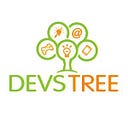How to Develop a Blockchain Application
Understanding Blockchain Basics
Blockchain is a game-changing technology with the potential to transform various industries. If you’re interested in creating your own blockchain application but feel overwhelmed, this guide breaks down the process step by step to make it less intimidating.
Getting the Basics Right
Before diving into development, grasp the fundamentals of blockchain technology. Essentially, it’s a secure and decentralized ledger that records transactions across a network of computers. Transactions are encrypted and linked, ensuring transparency, immutability, and security.
Step 1: Define Your Purpose
Start by identifying the specific problem your blockchain application aims to solve. Whether it’s streamlining supply chains, improving financial transparency, or building a decentralized app, a clear purpose is crucial for your development journey.
Step 2: Choose the Right Platform
Choosing the right blockchain platform is crucial. Platforms such as Ethereum, Hyperledger, and Binance Smart Chain provide distinct features. Take into account factors like scalability, consensus mechanism, and smart contract functionality to make a well-informed decision.
Step 3: Plan the Architecture
Create a strong architectural framework for your application. Define data structure, consensus mechanisms, and rules for your blockchain. Whether public or private, the architecture should match your use case and scalability needs.
Step 4: Develop Smart Contracts
Smart contracts, written in languages like Solidity or Chaincode, govern your application’s logic. Develop these self-executing contracts to enhance your blockchain’s functionality.
Step 5: Build User-Friendly Interface
Design an intuitive user interface for seamless interaction with your blockchain application. This involves creating a front-end for users to access and engage with effortlessly.
Step 6: Connect with APIs
Integrate Application Programming Interfaces (APIs) to link your blockchain application with external services and databases, ensuring interoperability and maximum functionality.
Step 7: Thorough Testing
Before deployment, conduct thorough testing to identify and fix potential issues. Unit testing, integration testing, and system testing ensure your application’s reliability and security.
Step 8: Deploy and Maintain
Following successful testing, launch your blockchain application. Consistently monitor and upkeep it to tackle emerging issues, incorporate updates, and guarantee uninterrupted functionality.
Conclusion
Embarking on the journey to create a blockchain application might seem daunting, but with a good grasp of these steps, you’re ready to tackle the intricacies of this transformative technology. Embrace the power of blockchain to devise creative solutions and be a part of the continually evolving landscape of decentralized applications. Enjoy the coding process!
We hope this guide on blockchain app development has been helpful! With the knowledge shared earlier, you should now be on your way to crafting your own concept for a blockchain app. Have you started working on it? We’d love to hear about your concept and your progress in development.
For further assistance in refining your app development ideas, consider seeking advice from Devstree, a reliable company specializing in blockchain development. We can assist you in enhancing your decentralized journey.
